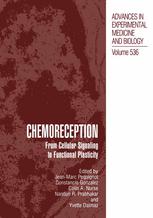

Most ebook files are in PDF format, so you can easily read them using various software such as Foxit Reader or directly on the Google Chrome browser.
Some ebook files are released by publishers in other formats such as .awz, .mobi, .epub, .fb2, etc. You may need to install specific software to read these formats on mobile/PC, such as Calibre.
Please read the tutorial at this link: https://ebookbell.com/faq
We offer FREE conversion to the popular formats you request; however, this may take some time. Therefore, right after payment, please email us, and we will try to provide the service as quickly as possible.
For some exceptional file formats or broken links (if any), please refrain from opening any disputes. Instead, email us first, and we will try to assist within a maximum of 6 hours.
EbookBell Team

4.4
32 reviewsSince 1959, the International Society of Arterial Chemoreception (ISAC) has organized in a variety of countries fifteen scientific meetings devoted to the mechanisms of peripheral arterial chemoreception and chemoreceptor reflexes. After the meeting held in Philadelphia with Sukhamay Lahiri as president, ISAC membership elected Lyon (CNRS, University Claude Bernard, France) as the site of the xv" ISAC Symposium. The Symposium was effectively held in Lyon from the 18th to the 22nd of November 2002 and Jean-Marc Pequignot was its president. The organizers were Jean-Marc Pequignot and Yvette Dalmaz Lyon (CNRS, University Claude Bernard, France) and the Scientific Committee was formed by John Carroll (University of Arkansas for Medical Sciences, USA), Constancio Gonzalez (University of Valladolid, Spain), Prem Kumar (University of Birmingham, U. K. ), Sukhamay Lahiri (University of Pennsylvania, Philadelphia, USA), Colin Nurse (McMaster University, Hamilton, Ontario, Canada), and Nanduri Prabhakar (Case Western University, Cleveland, Ohio, USA). The Symposium in Lyon intended to follow the path opened in Philadelphia gathering people working at the interface of cellular and molecular biology with researchers in the more classical topics of chemoreception pathways and reflexes. The aim was to join experts with different perspectives. Along these lines, some participants are engaged in the exploration of the intimate mechanisms of oxygen sensing and cellular responses, with their work centered in a great number of preparations covering a broad spectrum from bacteria, to chemoreceptor cells or to central nervous systems neurons.